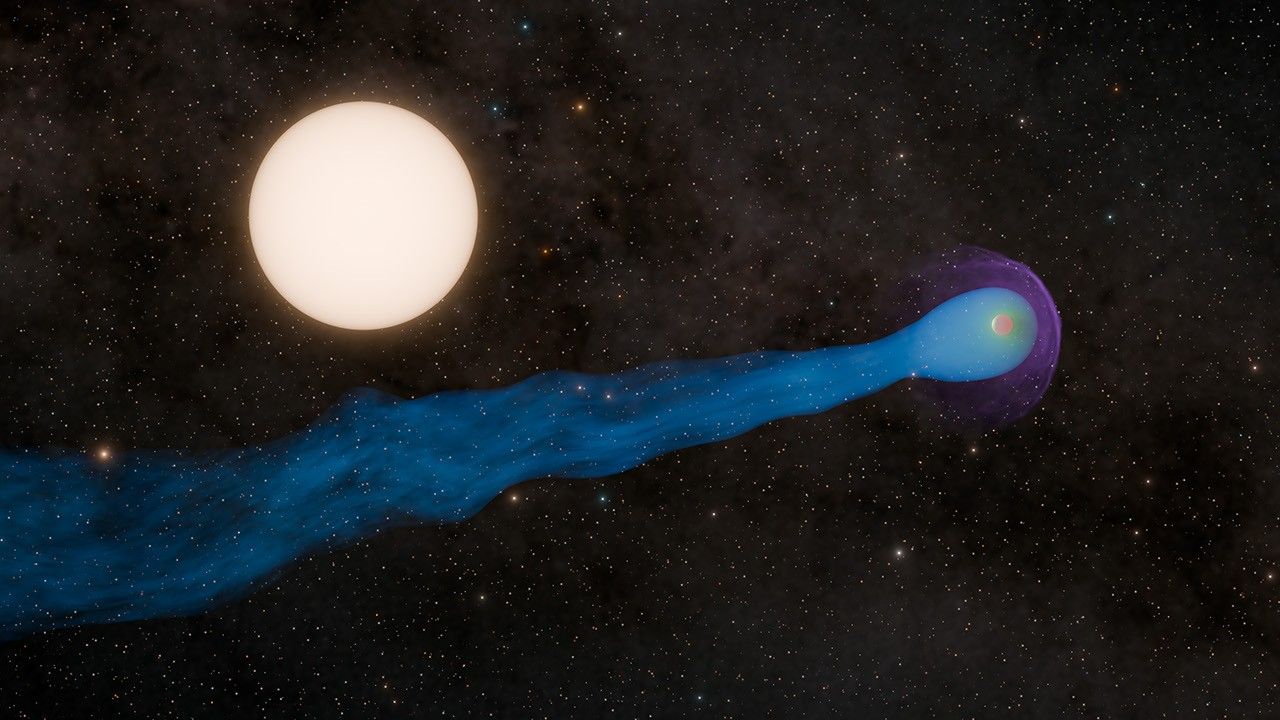At the end of their first month aboard the International Space Station (ISS), Expedition 1 crew members William P. Shepherd, Yuri P. Gidzenko, and Sergei K. Krikalev received their first visitors. As the first team to live and work aboard the ISS, they had a very busy first month, activating many of the facility’s systems and learning how to maintain the orbital outpost. The five-person STS-97 crew completed the installation of the P6 element, the station’s first truss segment, and the first pair of U.S. solar arrays to provide the growing facility with additional power. During the 11-day mission, they also transferred critical supplies to the space station, including new exercise equipment.



Left: Progress M1-4, also as known as 2P in the International Space Station (ISS) assembly sequence, approaches the ISS just before docking. Middle: Expedition 1 crew members Yuri P. Gidzenko, left, William M. Shepherd, and Sergei K. Krikalev showing off some fresh fruit that Progress M1-4 delivered. Right: Shepherd exercising on the treadmill in the Zvezda Service Module.
After they arrived at the ISS on Nov. 2, 2000, the Expedition 1 crew began the task of turning the station into a living and working place. That involved activating, and in some cases installing, critical systems such as the toilet, the air revitalization system, the carbon dioxide removal system, and the computer network. They set up their sleep stations, with Shepherd and Krikalev moving into the two crew quarters, known as cayutas in Russian, in the Zvezda module while Gidzenko set up his sleeping bag in the Zarya module. They settled into a daily exercise routine, with each crew member working out on the station’s treadmill and bicycle ergometer. On Nov. 10, in a video conference with the Russian Flight Control Center in Korolev in Moscow’s suburbs, they celebrated the facility’s 40th anniversary of controlling space missions. On Nov. 18, the first Progress cargo resupply spacecraft of their mission arrived, and when its automatic rendezvous system malfunctioned, Gidzenko used a tele-operated system to guide it to a successful docking at Zarya’s Earth-facing port.
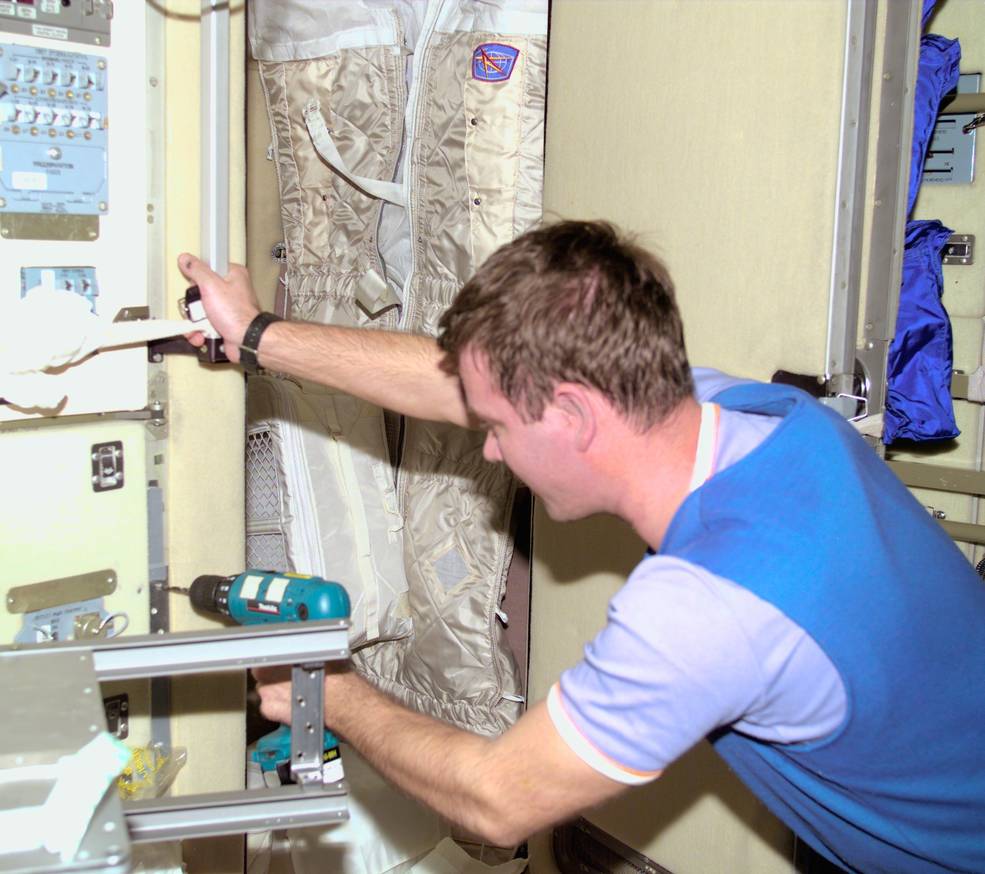


Left: Expedition 1 Flight Engineer Yuri P. Gidzenko uses a power drill to install the wardroom table the crew designed and built. Middle: The installed wardroom table that the crew designed and built. Right: Expedition 1 Flight Engineer Sergei K. Krikalev uses a telephoto lens for Earth observation photography.
The crew spent the next two weeks unloading the cargo that Progress M1-4 delivered. With leftover brackets from the cargo craft, Shepherd, Gideznko, and Krikalev designed and built a temporary wardroom table since the permanent one was not scheduled to arrive for several months. The table gave them a place to enjoy their meals together. Although getting the station in good working condition remained their primary task, they found time to conduct a little research, in particular taking photographs of the Earth as it passed by below them. After they finished unloading the Progress, they filled it with trash and unneeded equipment. At its location on the Zarya Earth-facing port, the Progress created interference with the space shuttle about to arrive, so on Dec. 1, they undocked the cargo vehicle and sent it to a temporary parking orbit where it stayed during the STS-97 mission, returning for a second docking on Dec. 26.


Left: STS-97 crew patch. Right: STS-97 crewmembers Michael J. Bloomfield, left, Carlos I. Noriega, Marc Garneau, Joseph R. Tanner, and Brent W. Jett.
The sixth space shuttle assembly and resupply mission to the orbital facility took off in the evening of Nov. 30, 2000. Riding aboard space shuttle Endeavour were the five STS-97 astronauts, Brent W. Jett, Michael J. Bloomfield, Carlos I. Noriega, Joseph R. Tanner, and Marc Garneau. Less than two days after launch, Jett guided Endeavour to a smooth docking with the ISS at the Pressurized Mating Adapter-3, or PMA-3, located on the nadir or Earth-facing port of the Node 1 module, also known as Unity. The Expedition 1 crew observed Endeavour’s docking, the first shuttle arrival at an inhabited ISS, from the Zvezda module’s windows.

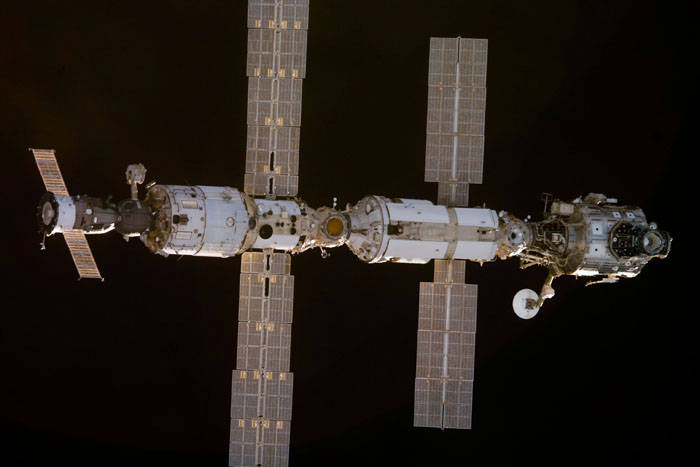

Left: Launch of Endeavour on space shuttle mission STS-97. Middle: View of the International Space Station (ISS) from Endeavour during the rendezvous and docking maneuver. Right: View from inside the ISS of space shuttle Endeavour.
Shortly after the docking, Garneau grappled the P6 truss with the shuttle’s Canadian-built remote manipulator system (RMS), or robotic arm. Lifting the truss out of the payload bay, he positioned it into an overnight hover position to let the Sun warm its components. The shuttle crew opened the hatch to the Unity module, leaving supplies (including coffee and tea) and equipment for the Expedition 1 crew to retrieve over the next few days. The next morning, Tanner and Noriega stepped out of Endeavour’s airlock for the mission’s first extravehicular activity (EVA). With the two spacewalkers providing visual cues, Garneau moved the P6 truss and placed it atop the station’s Z1 truss, where Tanner and Noriega completed the installation by securing bolts and completing initial power, command, and data connections. From inside Endeavour, Jett commanded the first of the two solar arrays to deploy. The first array initially balked but eventually unfurled, as did the second array. Tanner and Noriega wrapped up the first EVA after 7 hours and 33 minutes. During their second EVA on Dec. 5, Noriega and Tanner spent 6 hours and 47 minutes outside, completing electrical connections so the new solar arrays could provide electrical power to the U.S. segment. The mission’s third and final EVA on Dec. 7 lasted 5 hours and 10 minutes. Tanner and Noriega made adjustments to the solar arrays and deployed an experiment to measure the floating potential around the station. As their final act, they installed an image of an evergreen tree at the top of the P6 truss, a symbolic “topping out” of the ISS, following a construction industry tradition.



Left: Joseph R. Tanner during the first extravehicular (EVA), with one of the newly unfurled solar arrays behind him. Middle: Carlos I. Noriega during the second EVA, with the deployed solar array visible at top. Right: Noriega during the third EVA.
With the EVAs completed, the crews could now open the hatches between the shuttle and the station. In accordance with U.S. Navy tradition, Commander Shepherd greeted Commander Jett, both Navy men, with the ringing of a bell. Shepherd, Gidzenko, and Krikalev floated into the shuttle for their first good look at the new arrays. Then they returned to the ISS where Shepherd provided a safety briefing for the visitors. For the rest of the day, the two crews, consisting of eight crew members from three countries, transferred cargo back and forth, set up experiments, and carried out repairs. A meal together finished off a busy day. Then the STS-97 crew returned to the shuttle, closed the hatches, and prepared for undocking.

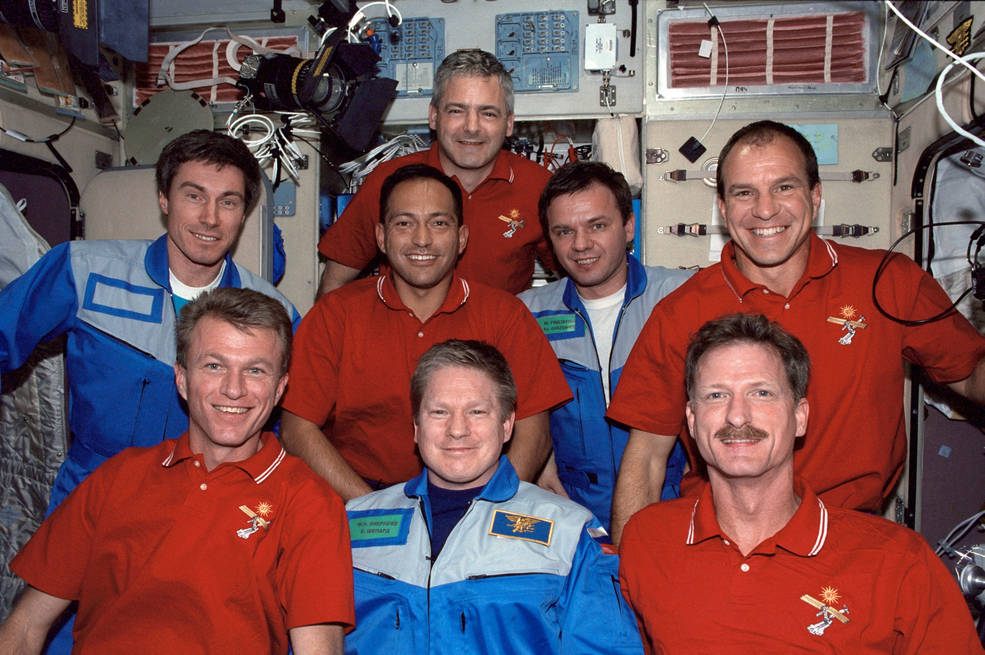
Left: Expedition 1 Commander Shepherd rings the bell to welcome STS-97 Commander Jett and his crew aboard the International Space Station. Right: The combined Expedition 1 and STS-97 crews pose for a group photo in the Zvezda module.
With Bloomfield at the controls, Endeavour undocked from the ISS on Dec. 9 and completed a fly-around of the expanded station, with the crew taking photographs to document its condition. Two days later, the astronauts closed Endeavour’s payload bay doors, put on their launch and entry suits, strapped into their seats, and fired the shuttle’s engines for the trip back to Earth. Jett guided Endeavour to a smooth night landing at KSC, ending a highly successful 11-day mission, the first to visit an occupied ISS, bringing power to the orbital laboratory to enable its future expansion and the beginning of a robust research program.
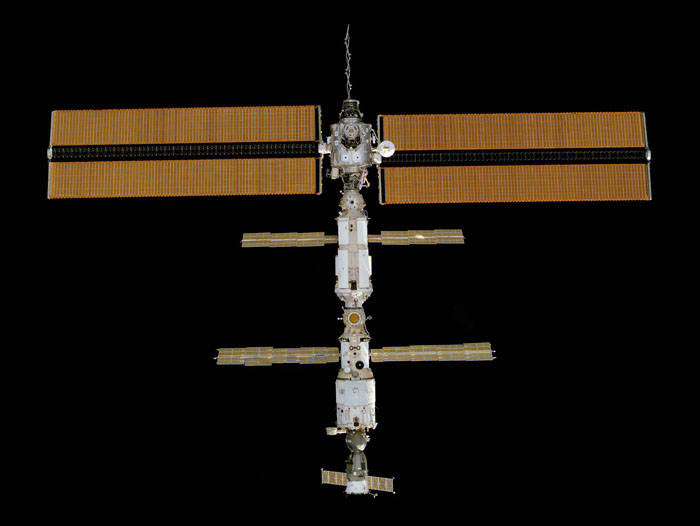

Left: A view of the International Space Station as seen from Endeavour during its departure, with the newly added solar arrays visible at top. Right: Endeavour makes a smooth night landing at KSC.
Enjoy the crew-narrated video about the STS-97 mission.













